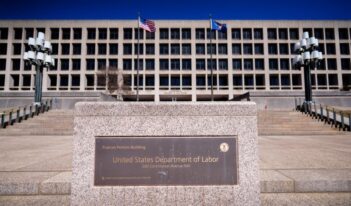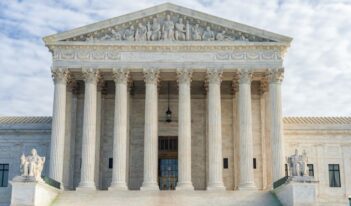
Scholar argues that OSHA has the authority to regulate occupational heat exposure.
Occupational exposure to heat can be deadly. The Bureau of Labor Statistics reported 43 workplace deaths due to extreme heat in 2021. The Occupational Safety and Health Administration (OSHA) recently announced a proposed rule that would regulate heat exposure in indoor and outdoor workplace settings.
The Supreme Court in National Federation of Independent Business (NFIB) v. OSHA rejected OSHA’s authority to issue an Emergency Temporary Standard (ETS) requiring all employers with more than 100 employees to implement mandatory COVID-19 vaccination or testing. In West Virginia v. EPA, the Court also recently concretized the major questions doctrine, which emphasizes that agency decisions of national significance must be clearly authorized by Congress. Do these decisions call into question OSHA’s authority to regulate heat exposure in the workplace?
In a recent article, Reed Shaw argues that neither NFIB nor West Virginia will limit OSHA’s authority to act. Shaw contends that the Occupational Safety and Health (OSH) Act, which authorizes OSHA to regulate occupational hazards, empowers OSHA to issue a rule on workplace temperatures.
Shaw explains that the Court struck down the ETS in NFIB, finding that COVID-19 was not an “occupational” safety hazard, but rather a more universal public health problem. As Shaw observes, the Court found that regulations of universal hazards must be narrowly tailored to the workplace context––with rules limited to the workplace and workday––to survive judicial review.
Responding to a comment on the proposed rule, Shaw argues that courts and regulators have broadly viewed heat as an occupational hazard throughout OSHA’s history. Shaw argues that state regulations and statutes in various areas of the law––such as employer negligence laws––reflect an understanding that extreme temperatures are occupational hazards.
States such as California have issued rules limiting workplace heat exposure to reduce the risk of heat illness for workers. The Supreme Court, in NLRB v. Washington Aluminum, wrote that dangerously cold temperatures in the workplace were “too bad to be tolerated in a humane society,” which Shaw uses as evidence of extreme temperature’s status as a workplace hazard.
Although the agency has never issued binding regulations on the subject, OSHA has issued guidance on workplace heat exposure since 1992.
Shaw argues that construing workplace hazards narrowly as to mean dangers posed exclusively in the workplace would frustrate the purpose of the OSH Act. He suggests that the Court in NFIB held that standards for universal hazards are permissible when “the standard’s controls on the hazard are tailored based on the level of risk of a hazard present in particular workplaces or limited to the workplace.”
Shaw explains that a heat exposure regulation would fit this requirement, as it would use tools such as mandated rest breaks triggered by high temperatures instead of applying a blunt instrument to all workplaces.
The ETS in question in NFIB and a workplace heat exposure standard are further distinguishable, argues Shaw, because heat-related illnesses have clearer links to the workplace than COVID-19, which can be contracted in other settings and is difficult to trace. In addition, Shaw points to the Court’s disapproval of a testing program that could require employees to pay to comply, explaining that a heat exposure regulation would be at the employer’s expense instead.
Turning to West Virginia, Shaw argues that a heat exposure standard would not be politically or economically significant because of its tailored nature, and that even if it was, there is clear congressional authorization for OSHA to act. Interpreted in NFIB, the OSH Act empowers OSHA to issue workplace safety standards. Shaw contends that heat exposure, although universally dangerous, still represents a workplace hazard that would be controlled by measures limited to the workplace, rather than a vaccine that could not be “undone at the end of the workday.”
Moreover, Shaw explains that the regulatory scheme at issue in West Virginia, the Clean Power Plan, was more novel, whereas OSHA has long issued exposure level-based standards as evidenced by asbestos rules.
The Court in West Virginia observed that Congress had passed legislation overriding regulatory schemes resembling the Clean Power Plan, which could suggest Congress did not believe the EPA already had the authority to act. Members of Congress have urged OSHA to regulate occupational heat exposure, and Shaw argues that this demonstrates that, unlike with the situation in West Virginia, Congress assumed OSHA had the preexisting authority to do so.
After explaining why both decisions do not foreclose heat exposure regulation, Shaw concludes that a heat exposure standard for the workplace lies within OSHA’s regulatory authority under the OSH Act.



